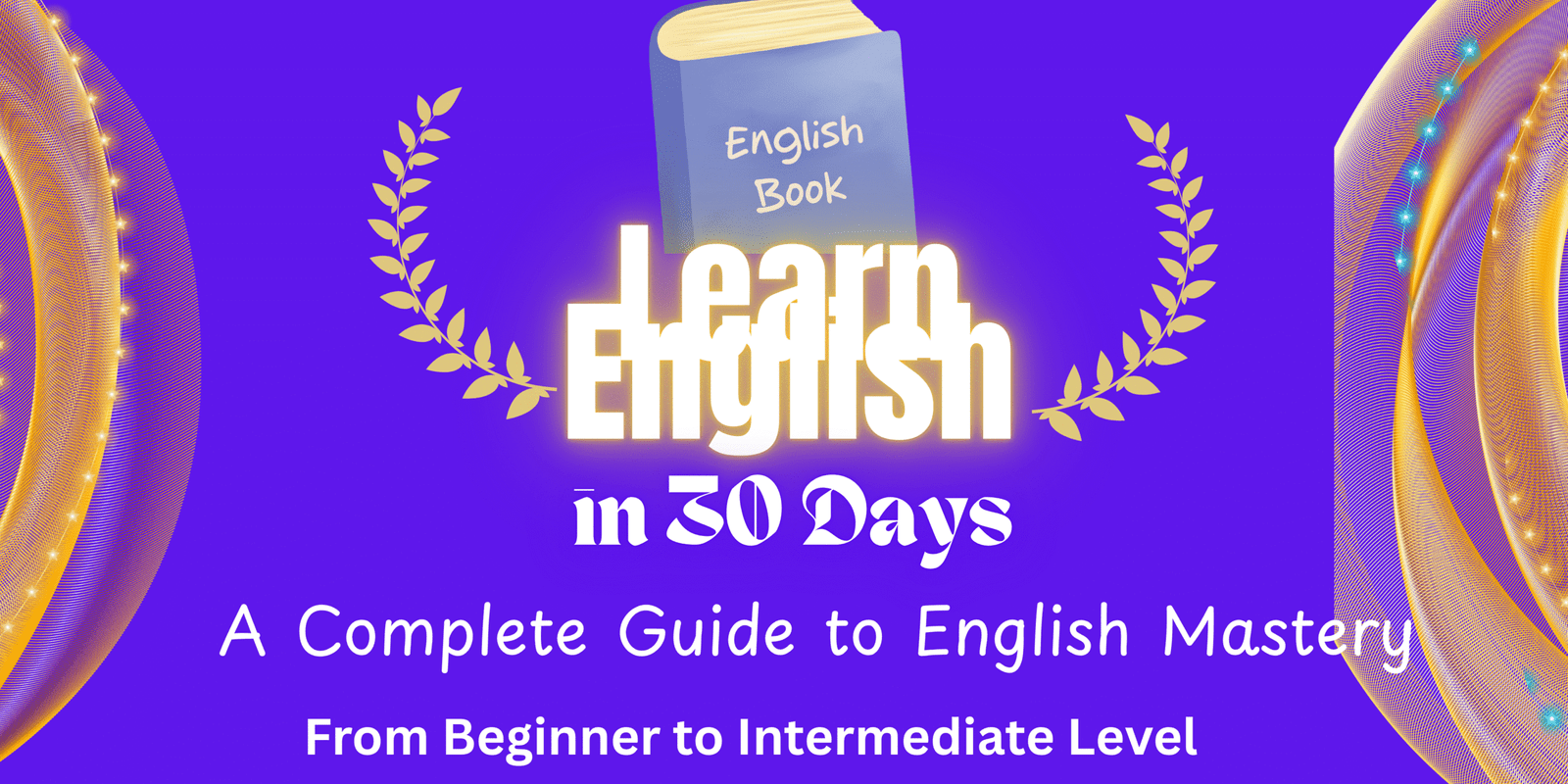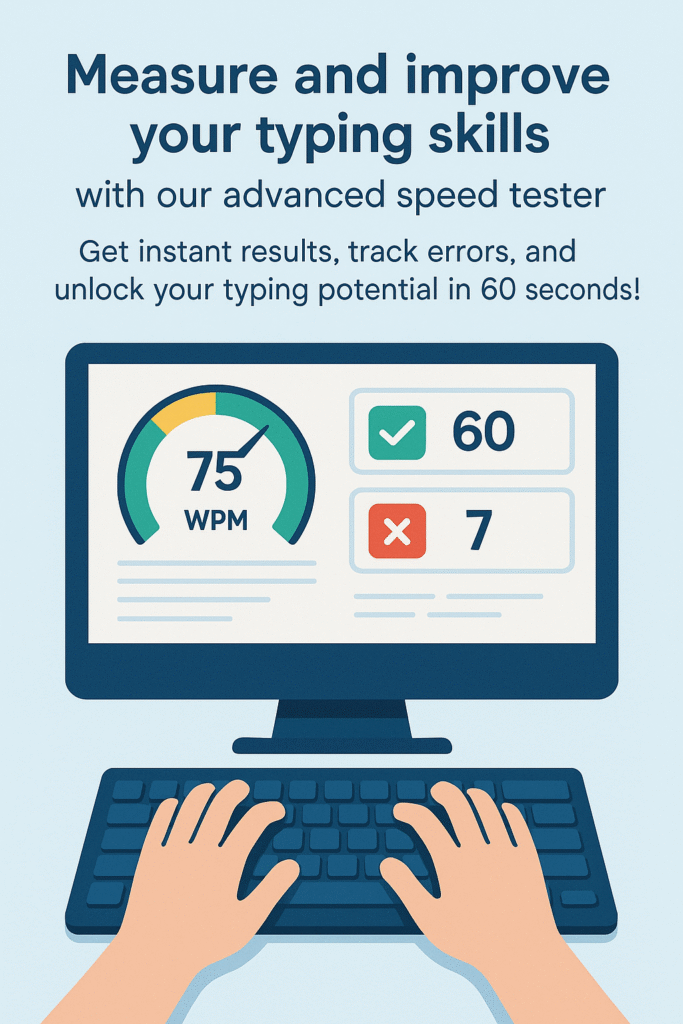Learn English in 30 Days: FREE PDF Download – Complete Beginner’s Guide to Fluent English Speaking

Learn english in 30 days pdf free
Learn English
in 30 Days
A Complete Guide to English Mastery
From Beginner to Intermediate Level
Table of Contents
Week 1: Foundation (Days 1-7)
- Day 1: Basic Greetings & Introductions
- Day 2: Personal Information
- Day 3: Family & Relationships
- Day 4: Numbers & Time
- Day 5: Daily Routines
- Day 6: Food & Drinks
- Day 7: Review & Practice
Week 2: Building Skills (Days 8-14)
- Day 8: Shopping & Money
- Day 9: Transportation
- Day 10: Directions & Locations
- Day 11: Weather & Seasons
- Day 12: Hobbies & Interests
- Day 13: Health & Body
- Day 14: Review & Practice
Week 3: Expanding (Days 15-21)
- Day 15: Work & Professions
- Day 16: Education & Learning
- Day 17: Technology & Communication
- Day 18: Travel & Tourism
- Day 19: Entertainment & Media
- Day 20: Environment & Nature
- Day 21: Review & Practice
Week 4: Mastery (Days 22-30)
- Day 22: Past Experiences
- Day 23: Future Plans
- Day 24: Opinions & Preferences
- Day 25: Problem Solving
- Day 26: Formal Communication
- Day 27: Cultural Topics
- Day 28: Business English
- Day 29: Final Review
- Day 30: Assessment & Celebration
Welcome to Your English Learning Journey!
Congratulations on taking the first step toward mastering English! This comprehensive 30-day program is designed to take you from beginner to intermediate level through structured, daily lessons that build upon each other.
How This Program Works
- Daily Structure: Each day contains vocabulary, grammar, exercises, and cultural insights
- Progressive Learning: Lessons build from basic to intermediate concepts
- Practical Focus: Real-world situations and conversations
- Cultural Context: Understanding English-speaking cultures
- Four Skills: Speaking, listening, reading, and writing practice
Study Tips for Success
- Study for 30-60 minutes each day consistently
- Practice speaking out loud, even if alone
- Write down new vocabulary in a notebook
- Review previous lessons regularly
- Use English in real situations whenever possible
- Don’t be afraid to make mistakes – they’re part of learning!
Remember: Language learning is a marathon, not a sprint. Be patient with yourself and celebrate small victories along the way!
Day 1: Basic Greetings & Introductions
Foundation of English communication
Learning Objectives
- Learn basic greetings and responses
- Introduce yourself and others
- Ask for and give names
- Use polite expressions
Key Vocabulary
Essential Phrases
Formal Greetings:
- Good morning/afternoon/evening
- How do you do?
- Pleased to meet you
Informal Greetings:
- Hi/Hello
- How’s it going?
- Nice to meet you
Practice Exercises
Exercise 1: Complete the conversations
A: Good morning!
B: ____________
A: What’s your name?
B: ____________
A: Nice to meet you!
B: ____________
Exercise 2: Match the situation with the greeting
1. Meeting someone at 9:00 AM → ___________
2. Meeting someone at 3:00 PM → ___________
3. Meeting someone at 8:00 PM → ___________
Cultural Note
In English-speaking countries, a firm handshake and eye contact are important when meeting someone new. People often ask “How are you?” as a greeting, not necessarily expecting a detailed answer. A simple “Fine, thank you” or “Good, thanks” is usually sufficient.
Day 2: Personal Information
Sharing and asking about personal details
Learning Objectives
- Ask and give personal information
- Talk about age, nationality, and occupation
- Learn question words (what, where, how)
- Use the verb “to be” correctly
Key Vocabulary
Grammar Focus: The Verb “To Be”
Positive:
- I am (I’m)
- You are (You’re)
- He/She/It is (He’s/She’s/It’s)
- We are (We’re)
- They are (They’re)
Negative:
- I am not (I’m not)
- You are not (You aren’t)
- He is not (He isn’t)
- We are not (We aren’t)
- They are not (They aren’t)
Questions:
- Am I…?
- Are you…?
- Is he/she/it…?
- Are we…?
- Are they…?
Practice Exercises
Exercise 1: Complete with the correct form of “to be”
1. I _____ 25 years old.
2. She _____ from Japan.
3. We _____ students.
4. _____ you a teacher?
5. They _____ not married.
Exercise 2: Ask questions about personal information
Example: name → What’s your name?
1. age → _______________?
2. nationality → _______________?
3. job → _______________?
4. address → _______________?
Cultural Note
In Western cultures, asking about age can be considered impolite, especially with older people or in formal situations. It’s safer to let people volunteer this information. However, asking about occupation and nationality is generally acceptable in casual conversation.
Day 3: Family & Relationships
Talking about family members and relationships
Learning Objectives
- Learn family member vocabulary
- Talk about relationships
- Use possessive adjectives
- Describe family members
Key Vocabulary
Grammar Focus: Possessive Adjectives
| I | → | my |
| You | → | your |
| He | → | his |
| She | → | her |
| It | → | its |
| We | → | our |
| They | → | their |
Examples:
- This is my mother.
- Her brother is a doctor.
- Our family is very close.
Practice Exercises
Exercise 1: Complete with possessive adjectives
1. I love _____ family very much.
2. She talks to _____ mother every day.
3. We visit _____ grandparents on weekends.
4. Do you know _____ brother’s name?
5. They live with _____ parents.
Exercise 2: Answer the questions about your family
1. How many brothers and sisters do you have?
2. What does your father do?
3. Where do your grandparents live?
4. Are you married?
Cultural Note
Family structures vary greatly across cultures. In English-speaking countries, nuclear families (parents and children) are common, but extended families, single-parent families, and blended families are also normal. It’s important to be sensitive when asking about family, as not everyone comes from traditional family structures.
Day 4: Numbers & Time
Essential numbers and time expressions
Learning Objectives
- Learn numbers 1-100
- Tell time accurately
- Ask and answer about time
- Use time expressions
Numbers 1-20
Telling Time
Basic Time:
- 3:00 – It’s three o’clock
- 3:15 – It’s quarter past three
- 3:30 – It’s half past three
- 3:45 – It’s quarter to four
Questions about time:
- What time is it?
- What’s the time?
- Do you have the time?
- When do you…?
Practice Exercises
Exercise 1: Write the numbers in words
7 → ___________
12 → ___________
25 → ___________
33 → ___________
50 → ___________
Exercise 2: Write the time in words
2:00 → _______________
4:15 → _______________
7:30 → _______________
9:45 → _______________
Cultural Note
English-speaking countries often use the 12-hour clock in daily conversation (with AM/PM), though the 24-hour clock is used in formal situations like timetables. Being punctual is highly valued in most English-speaking cultures – arriving late without notice is considered rude.
Day 5: Daily Routines
Describing everyday activities and habits
Learning Objectives
- Learn daily activity vocabulary
- Use the simple present tense
- Talk about routines and habits
- Use frequency adverbs
Daily Activities
Grammar Focus: Simple Present Tense
Positive:
- I wake up at 7 AM
- She works in an office
- We eat dinner at 6 PM
Remember: Add -s/-es for he/she/it
Frequency Adverbs:
- Always (100%)
- Usually (90%)
- Often (70%)
- Sometimes (50%)
- Rarely (10%)
- Never (0%)
Practice Exercises
Exercise 1: Complete with the correct verb form
1. I _______ (wake up) at 6:30 every morning.
2. She _______ (brush) her teeth after breakfast.
3. We _______ (have) lunch at 12 o’clock.
4. He _______ (go) to work by bus.
5. They _______ (watch) TV in the evening.
Exercise 2: Put the adverb in the correct position
1. I am late for work. (never)
2. She drinks coffee in the morning. (always)
3. We go out on weekends. (sometimes)
4. He plays tennis. (often)
Cultural Note
Work-life balance varies across English-speaking countries. In the US, long working hours are common, while Europeans often have shorter work weeks. Most cultures value punctuality for work and appointments, but social gatherings may be more flexible with timing.
Day 6: Food & Drinks
Talking about meals, ordering food, and preferences
Learning Objectives
- Learn food and drink vocabulary
- Order food in restaurants
- Express likes and dislikes
- Use countable and uncountable nouns
Food Vocabulary
Restaurant Phrases
Ordering:
- I’d like…
- Can I have…?
- What do you recommend?
- The check, please.
Preferences:
- I like/love…
- I don’t like…
- I prefer…
- I’m allergic to…
Practice Exercises
Exercise 1: Complete the restaurant conversation
Waiter: Good evening. What would you like to drink?
Customer: I’d _______ a glass of water, please.
Waiter: And for your main course?
Customer: _______ I have the chicken salad?
Cultural Note
Tipping culture varies: 15-20% is standard in the US, while tipping is less common in the UK and Australia. Many English-speaking countries have diverse food cultures due to immigration, so you’ll find cuisine from around the world.
Remaining Daily Lessons (Days 7-30)
Your complete English learning journey continues with these structured lessons:
Week 1 Completion
Day 7: Review & Practice
Comprehensive review of Week 1 topics with mixed exercises, speaking practice, and confidence building activities.
Week 2: Building Skills
Days 8-14
- Shopping & Money (comparatives, prices)
- Transportation (prepositions of movement)
- Directions & Locations (there is/are)
- Weather & Seasons (present continuous)
- Hobbies & Interests (gerunds, like + -ing)
- Health & Body (modal verbs: should, must)
- Review & Practice
Week 3: Expanding
Days 15-21
- Work & Professions (present perfect introduction)
- Education & Learning (past simple)
- Technology & Communication (future with will/going to)
- Travel & Tourism (past continuous)
- Entertainment & Media (passive voice basics)
- Environment & Nature (conditionals type 1)
- Review & Practice
Week 4: Mastery
Days 22-30
- Past Experiences (present perfect vs past simple)
- Future Plans (advanced future forms)
- Opinions & Preferences (reported speech basics)
- Problem Solving (modal verbs for advice)
- Formal Communication (formal vs informal register)
- Cultural Topics (cultural comparison language)
- Business English (professional communication)
- Final Review (comprehensive grammar review)
- Assessment & Celebration (self-evaluation)
Grammar Reference
Verb Tenses
Simple Present
I work, She works
For habits and general truths
Present Continuous
I am working, She is working
For actions happening now
Simple Past
I worked, She worked
For completed past actions
Question Formation
Yes/No Questions
Are you…? / Do you…? / Did you…?
WH- Questions
What, Where, When, Why, How, Who
Question Words + Be
What is…? Where are…?
Essential Vocabulary Themes
Personal Life
- • Family members
- • Daily activities
- • Personal information
- • Hobbies & interests
- • Emotions & feelings
Daily Needs
- • Food & dining
- • Shopping & money
- • Transportation
- • Health & medicine
- • Housing & home
Work & Society
- • Jobs & professions
- • Education & learning
- • Technology & media
- • Travel & tourism
- • Environment & nature
Pronunciation Guide
Vowel Sounds
Consonant Sounds
Pronunciation Tips:
- Listen to native speakers and imitate their rhythm and intonation
- Practice tongue twisters to improve difficult sounds
- Record yourself speaking and compare with native pronunciation
- Focus on word stress and sentence stress patterns
- Don’t worry about perfect accent – clear communication is the goal
500 Most Common Phrases
Everyday Expressions
Useful Questions
Cultural Insights
Communication Styles
Small Talk
Common topics: weather, weekend plans, sports, current events (avoid politics, personal finances, religion)
Politeness
Use “please,” “thank you,” “excuse me,” and “sorry” frequently. Indirect communication is often preferred.
Social Customs
Personal Space
Maintain arm’s length distance in conversations. Handshakes are common for greetings in professional settings.
Punctuality
Being on time is important for appointments and meetings. Social events may have more flexibility.
Your 30-Day Study Plan
Daily Study Schedule
Morning (20 minutes)
- Review previous day’s vocabulary
- Read new lesson content
- Practice pronunciation
Evening (20 minutes)
- Complete exercises
- Write practice sentences
- Review grammar points
Week 1
Foundation Building
Week 2
Skill Development
Week 3
Expanding Knowledge
Week 4
Mastery & Integration
Track Your Progress
Self-Assessment Checklist
Week 1 Goals ✓
Week 2 Goals ✓
Study Tips for Success:
- Set aside the same time each day for studying
- Keep a vocabulary notebook and review it daily
- Practice speaking English with yourself in the mirror
- Watch English movies or TV shows with subtitles
- Join online English learning communities
- Don’t be afraid to make mistakes – they’re part of learning!
Congratulations on Starting Your Journey!
You now have everything you need to learn English in 30 days. Remember, consistency is key – even 20 minutes of daily practice will lead to significant improvement.
🎯 Stay Focused
Follow the daily lessons in order and don’t skip ahead
💪 Practice Daily
Consistency beats intensity – study a little every day
🌟 Believe in Yourself
You can do this! Thousands have succeeded with this method
Your English fluency journey starts now!
Save this guide, print it if needed, and begin Day 1 tomorrow. Good luck!
Learn English in 30 Days
A Complete Guide to English Mastery
This comprehensive guide contains structured lessons, practical exercises, cultural insights, and everything you need for successful English learning. Use it as your daily companion on your language learning journey.






